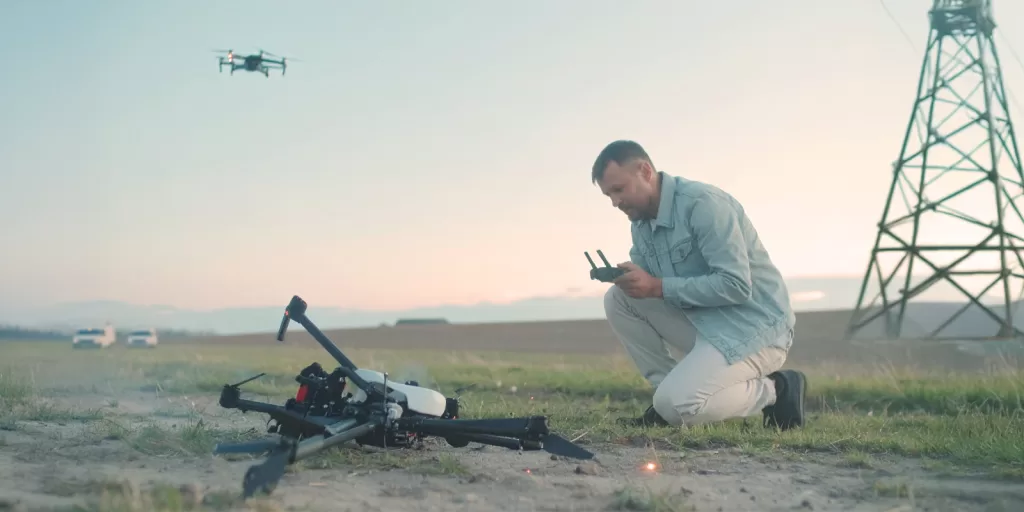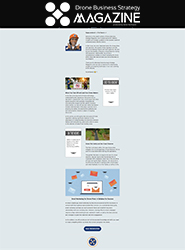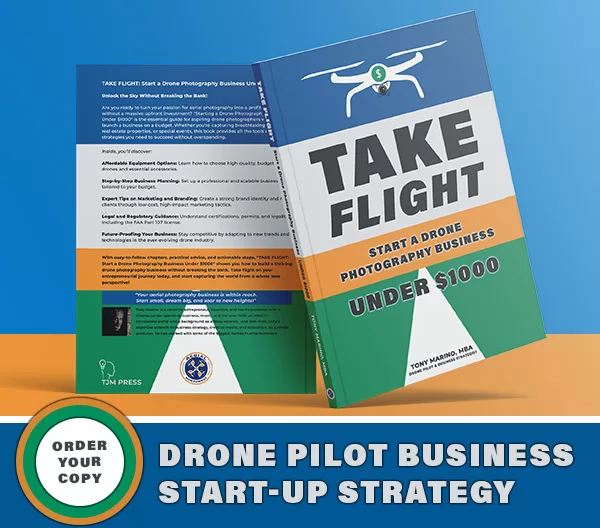
Most drone pilots—from weekend hobbyists to serious business operators—are making the same five mistakes. And they’re not just rookie errors in flight. These are massive oversights in training, compliance, equipment, planning, and strategy that can end your drone program for good.
We’re not talking about a simple crash you can recover from by ordering a replacement part. These mistakes can ground your drone permanently, drain your bank account, and wreck your reputation. Avoiding them is what separates sustainable, thriving operations from those that crash and burn.
Mistake #1: No Formal Training Program
It’s tempting to think that because you can launch from your backyard and avoid the trees, you’re ready to go. But confidence without training is one of the fastest paths to disaster.
Untrained pilots often don’t understand the full capabilities—or the limitations—of their aircraft. They panic when a connection is lost or weather conditions shift, and their overcorrections can turn a close call into a catastrophic crash.
The Fix: Build a real training program, even if you’re a solo operator. Go beyond the Part 107 test. Use simulators to sharpen reflexes, log hours in diverse conditions, and drill emergency procedures until they become second nature. Training isn’t an expense—it’s the best insurance you can buy.
Mistake #2: Treating Compliance as an Afterthought
Drone regulations are complex, evolving, and unforgiving. Skipping permits, ignoring privacy laws, or flying in restricted airspace isn’t just risky—it’s a guaranteed way to invite fines, legal action, or even a shutdown.
One bad flight can trigger complaints, investigations, and the loss of your license to operate. Treating compliance as optional is the fastest way to kill your drone business.
The Fix: Build compliance into the DNA of your operation. Use tools that provide real-time airspace updates, conduct privacy assessments, and make compliance checks the first step in every flight plan. A compliance-first culture is the only way to survive and grow.
Mistake #3: Neglecting Hardware and Maintenance
Many pilots assume if their drone flew fine yesterday, it will fly fine today. That assumption has destroyed countless drones—and careers. Battery failures, cracked propellers, loose screws, and hidden frame stress can all trigger catastrophic mid-air failures.
Skipping a two-minute pre-flight check can turn a $5,000 drone into a lawn ornament and destroy your credibility in the process.
The Fix: Treat your drone like a manned aircraft. Perform detailed pre- and post-flight inspections, log maintenance, track flight hours, and replace parts on schedule. Discipline in maintenance ensures reliability and protects your investment.
Mistake #4: Underestimating the Environment
Too many pilots check the weather app and assume they’re good to go. But the environment is far more complicated—and far more dangerous.
GPS interference, high winds, cold temperatures, humidity, and electromagnetic interference can all destabilize a drone mid-flight. Without preparation, these variables can quickly turn a mission into a costly failure.
The Fix: Conduct a thorough site survey before every mission. Identify potential interference sources, set hard limits for weather conditions, and use drones with advanced navigation systems like RTK. Respecting the environment is non-negotiable.
Mistake #5: No Strategic Plan
This mistake often kills drone programs before they even get off the ground. Companies buy drones without a clear goal, pilots collect data no one knows how to use, and the legal or IT departments—never consulted—shut the whole thing down over risks.
Without a strategy, drones are just expensive toys collecting dust.
The Fix: Develop a clear operational strategy from day one. Define measurable goals (efficiency, marketing, safety), secure buy-in from legal and IT, and create a plan for managing and scaling data. A strategic roadmap transforms drones from novelty items into business-critical tools.
Takeaway
Avoiding these five mistakes is what separates the professionals from the grounded. Training, compliance, maintenance, environmental awareness, and strategic planning are not optional—they are the pillars of a sustainable drone business.
If you’ve stumbled into one of these traps before, don’t worry. The key is to recognize it and correct course. Building a culture of discipline, foresight, and safety will protect not only your drone, but also your business and your future in the sky.
Flying a drone is a privilege, and with it comes great responsibility. Treat it that way, and your drone won’t just survive—it will help your business thrive.
If you have any questions, let us know! If you’d like to hire us, you can get more information here.
Written by: Tony Marino, MBA – FAA Certified Part 107 Commercial Drone Pilot and Chief Business Strategist at Aerial Northwest
Disclaimer: The information provided in this blog post is for general informational purposes only and should not be construed as legal advice.
Drone Pilot MBA Series
5 Mistakes That Will Ground Your Drone Business Forever
Resources
FAA Resources: FAA DroneZone
TFR Info: TRF Info
Article: What Does it Mean to Decode the Drone Industry?
Article: Pitch Perfect: Guide for Drone Pilots to Get Jobs
Drone Service Providers Alliance
Commercial Drone Alliance
Starting Your Own Drone Service Business
Pick up your copy today on Amazon and wherever fine books are sold.

DRONE BUSINESS STRATEGY MAGAZINE
A free digital publication made exclusively for all small business drone pilots to them help start-up, become profitable while sustaining a competitive advantage within the drone service industry sector they opt to serve.
“If you love to fly, we’d love to have you come aboard!”
We share your information with no one. Our Privacy Policy.










1 Comment
Leave your reply.